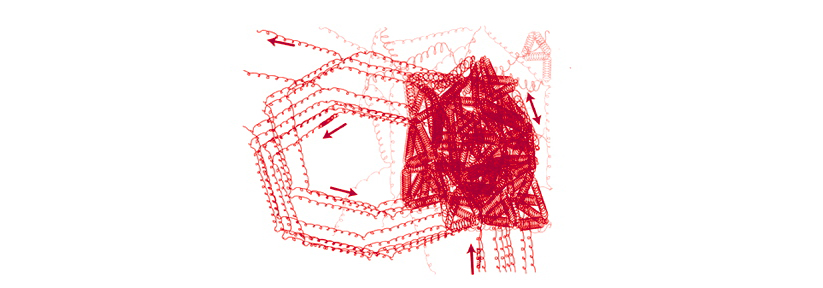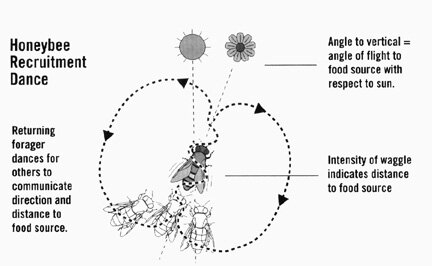In The Interpretation of Dreams, Freud warned the reader against the view of the mind as physically spatial. Such an error would be mistaking "the scaffold" for "the building". Yet his "topographical" accounts of the unconsious are thoroughly spatial.
One of the earliest reflexes of a breast-fed newborn is to turn its head towards the person, male or female, who is holding it in the nursing position (that is, in a horizontal position. Later, the baby will stare at the face of the mother unwaveringly during the act of nursing. During this time she feels the nipple in her mouth while at the same time she sees the mother's face. Ren Spitz describes this experience as the origins of the distinction between contact perception (oral tactile) and distance perception, between haptic and optic perception.
The dyad of reciprocal relations between mother and child, between object and subject, are the first form of "object relations," which later become social relations. Karl Abraham invented the term of "object relations" to describe persons or things which mediate instinctual discharge for a given person. Melanie Klein developed the theory in relation to the mother as principal object and used children's play as a basis for understanding their cognition. D.W. Winnecott describes the holding environment, the "potential space" between the baby and the mother that comes into being during the phase of repudiation, when the baby is at a stage of separating out the mother from the self and the mother is lowering the degree of adaptation to the baby's needs. (He also compares this moment to late stages of psychiatric treatment) Confidence in the mother's reliability, and therefore in that of other people and things, makes possible a separating-out of the not-me from the me. The move from dependence to autonomy is achieved by the filling in of the potential space with creative playing, with the use of symbols, and with all that eventually adds up to a cultural life. (Playing and Reality, pp 107-9)
Jessica Benjamin links the intersubjective realm of the holding environment and transitional experience to the experience of inner self, which she sees as enabling the experience of women's desire. ("A Desire of One's Own, in Teresa de Lauretis, ed. Feminist Studies / Critical Studies) see body.
The analysis of the mirror stage accounts for the child's aquisition of notions of spatiality and temporality. (see also ego)For the first time, the child is not absorbed by its environment (both occupying no space at all and being all-pervasive) but is now part of space, taking up a place or location in space. The "buccal" space of the neonate, the space that can be contained in or exploited by the child's mouth, is replaced with the first notion of a binarized space, capable of being divided into real and virtual planes. The virtual duplication of the subject's body, the creation of a symmetry measured from the picture plane, is necessary for these more sophisticated, abstract, and derivative notions of spatiality. (see body image.)The mirror stage is a link between space and representation.
J.-B. Pontalis observed that Charcot's space at the Salpetri re was a full, theatrical space -- which is, in fact, the space of the hysteric -- which Freud replaced with an empty, purely mental space. The analyst sat out of sight of the patient, who reclined on a couch without the presence of any other spectators. ("Between Freud and Charcot: from One Scene to the Other" , in Frontiers in Psychoanalysis)
In "Mimicry and Legendary Psychasthenia" (first published in Minotaure in 1935 and playing a crucial role in Jacques Lacan's theory of the mirror stage. published in English in October 31, Winter 1984) Roger Caillois talks about "depersonalization by assimilation into space" in both psychosis and animal mimicry. (see bwo) Schizophrenic thought is "adualistic"; lack of ego boundaries makes it impossible to set limits to the process of identification with the environment.
Surrealism and the city as the place of chance (and magical) encounter. "Ce qui me s duit dans une telle mani re de voir, c'est qu'a perte de vue elle est recr atrice de d sir" (Andr Breton, L'Amour Fou) magnetic fields as the actions of desire.



